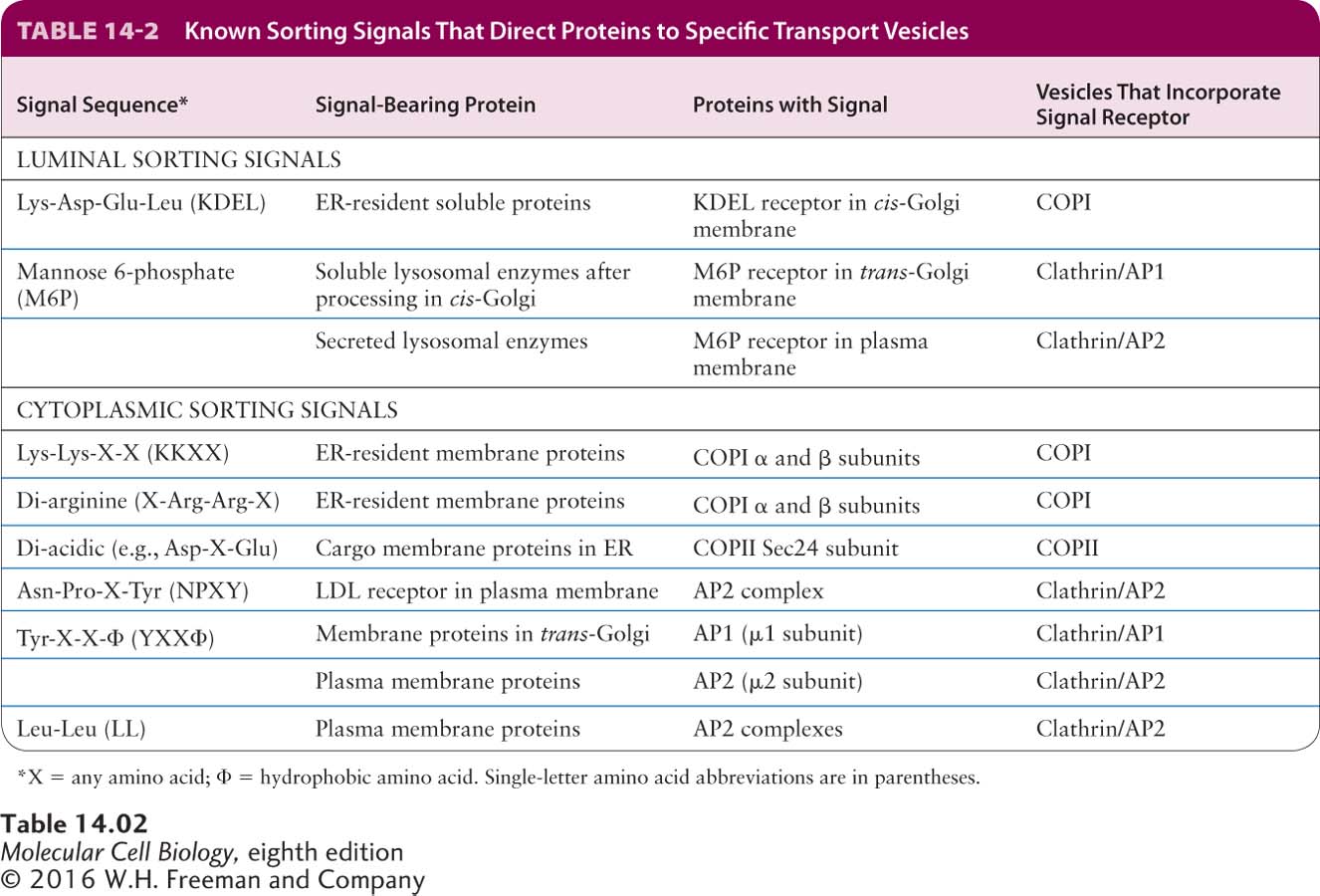Targeting Sequences on Cargo Proteins Make Specific Molecular Contacts with Coat Proteins
In order for transport vesicles to move specific proteins from one compartment to the next, vesicle buds must be able to discriminate among potential membrane and soluble cargo proteins, accepting only those cargo proteins that should advance to the next compartment and excluding those that should remain as residents in the donor compartment. In addition to sculpting the curvature of a donor membrane, the vesicle coat functions in selecting specific proteins as cargo. The primary mechanism by which the vesicle coat selects cargo molecules is by directly binding to specific sequences, or sorting signals, in the cytosolic portion of membrane cargo proteins (see Figure 14-6a). The polymerized coat thus acts as an affinity matrix to cluster selected membrane cargo proteins into forming vesicle buds. Because soluble proteins within the lumen of the parent organelle cannot contact the coat directly, they require a different kind of sorting signal. Soluble luminal proteins often contain what can be thought of as luminal sorting signals, which bind to the luminal domains of certain membrane cargo proteins. The properties of some of the known sorting signals in membrane and soluble proteins are summarized in Table 14-2. We describe the role of these signals in more detail in later sections.
